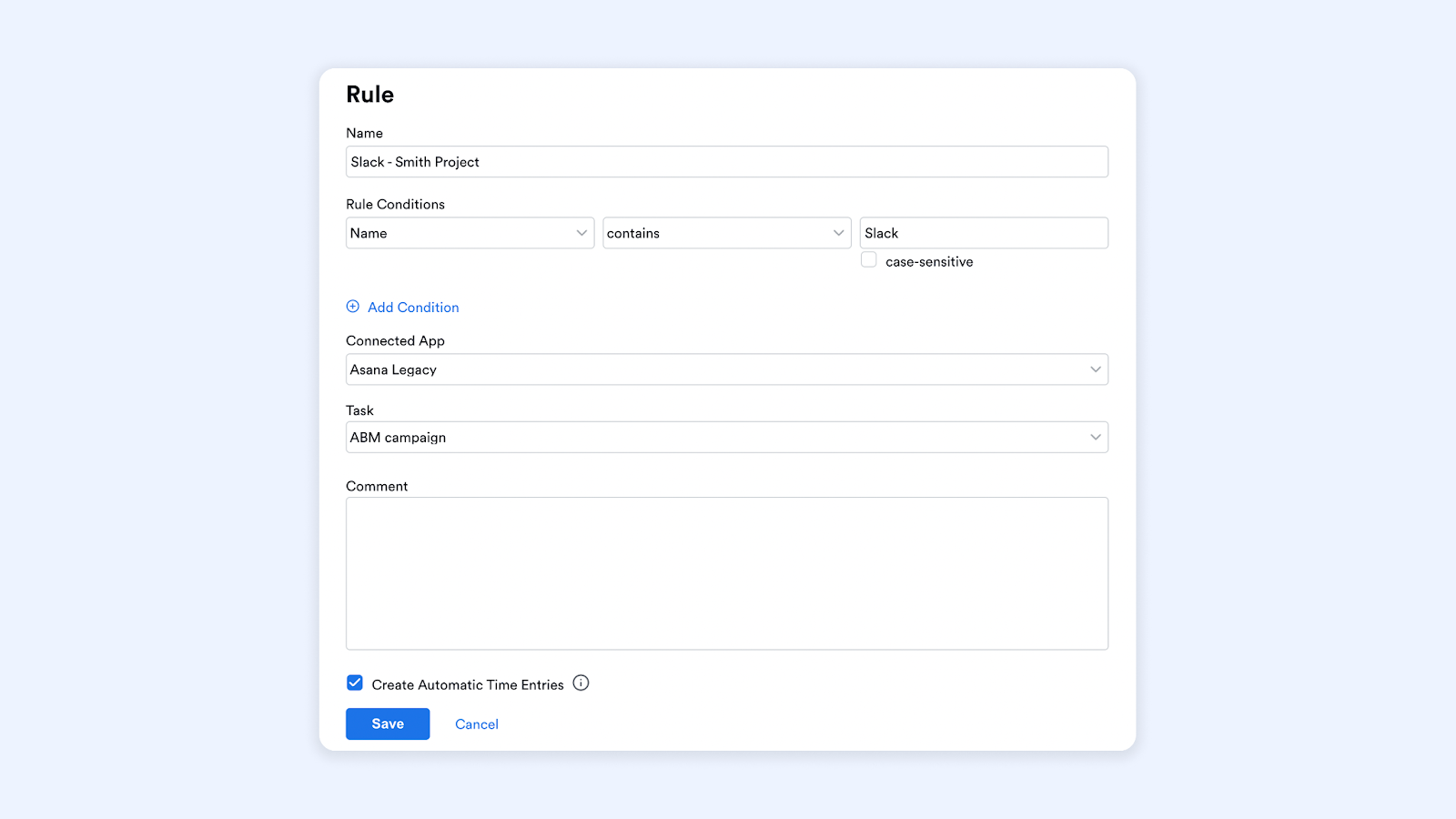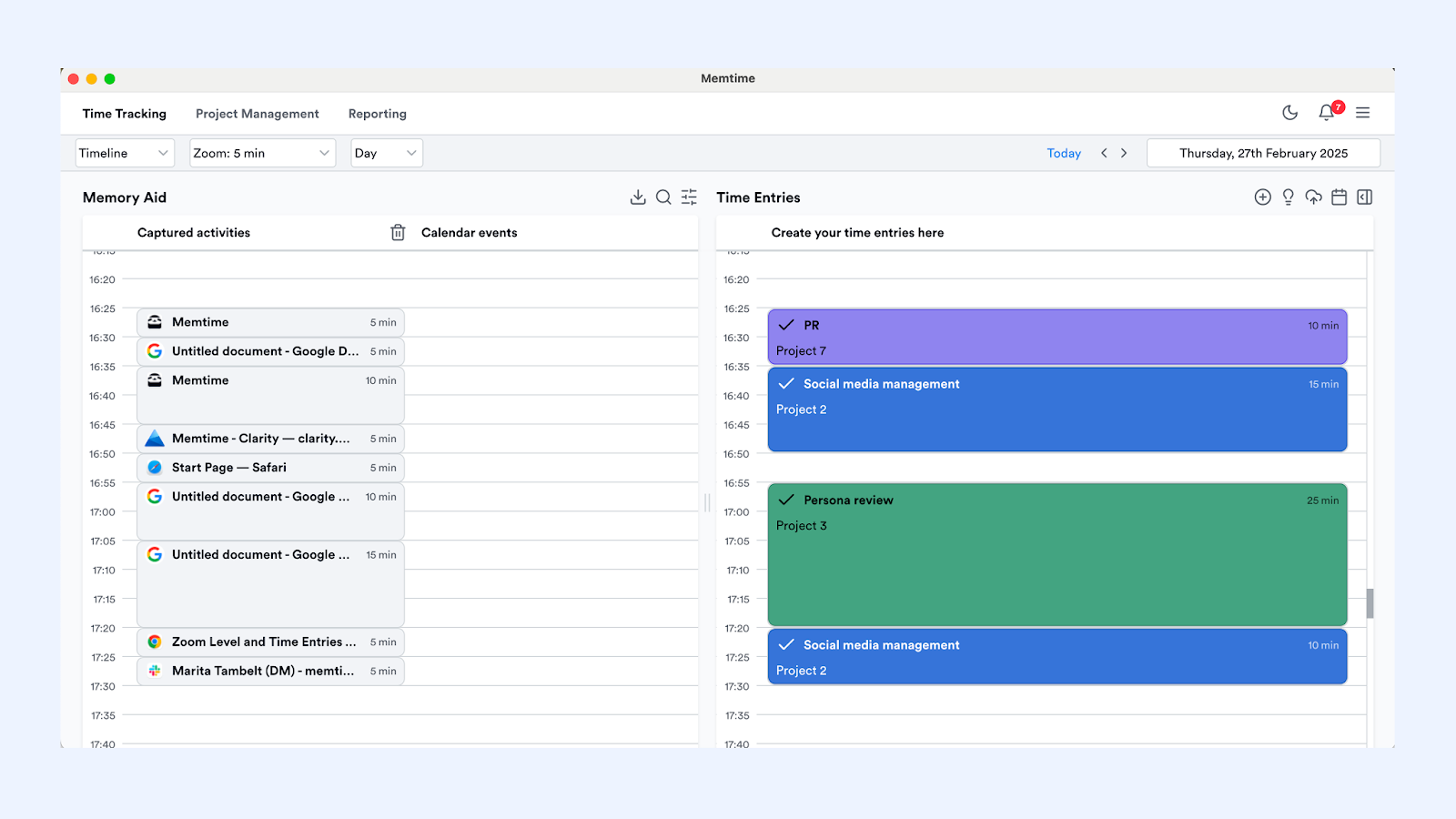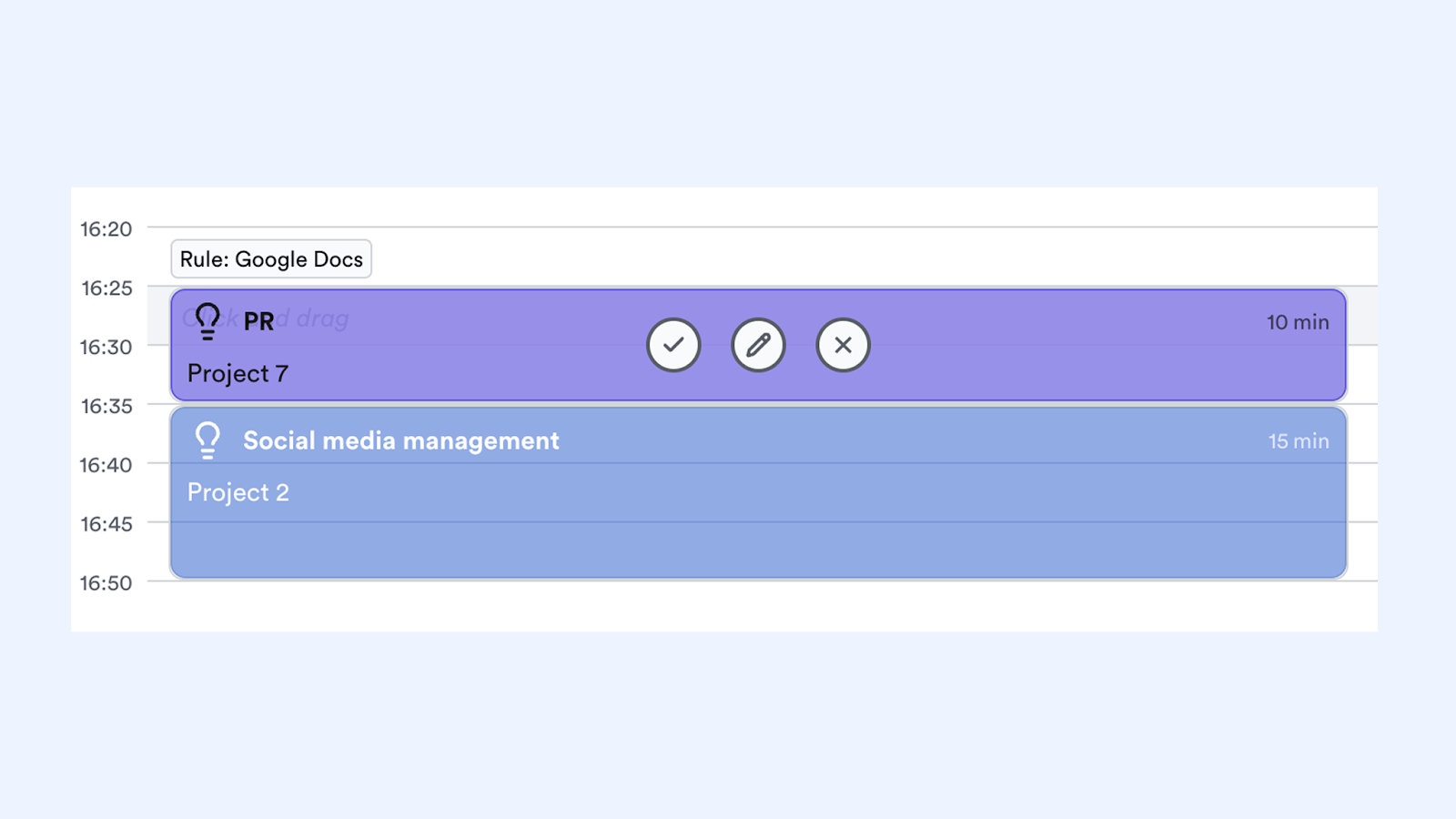Memtime Tips: How to Create Time Entries with Automation Rules
.png)
Creating time entries in Memtime is already quick and easy when done manually, but there are cases where you can benefit from automation. Imagine working on a specific document every day – rather than manually creating a time entry each time, you can set up a rule that would generate it automatically based on a condition like the document name.
This article will explain what automation rules are and how you can benefit from automatic time entries.
How do automatic time entries work?
Automatic time entries are created based on the rules a user sets.
The rules function like smart triggers based on conditions (name, program title, URL path, etc.) and filters (“contains”, “starts with”, “equals”, etc).
So, if you set a rule to recognize Slack among programs (e.g., "name contains Slack"), Memtime will analyze your captured activities and if Slack is among them, will create a time entry.

Its accuracy and duration depend on two settings:
- Zoom level — the level of detail at which Memtime tracks your activities and creates time entries
- Time entry minimum duration — the minimum length required for a time entry to be created.

When do I need to use automation rules?
If you work on multiple things all day every day, automation rules can be useful for you especially:
When you have recurring meetings or tasks
Say you have a weekly sync every Monday and manually create a time entry for it each time. Instead of doing this repeatedly, you can set up a rule in Memtime to automatically create a time entry based on the meeting name. Once you do it, Memtime will start applying it from that moment onward.
If you want less manual work
This ties back to the point above. Manually logging the same things over and over can be exhausting, especially if you have many recurring meetings and activities. In the end, you spend less time at the end of your week checking if you created time entries for all tasks and projects.
If you want to make your tracking even more accurate
Because Memtime can track your captured activities up to 1 minute accuracy, your time entries can be created with precise, minute-by-minute detail.
Where do I start with automation rules?
- If you’re new to automation, begin with automatic time entry suggestions. The only difference between them and automated time entries is that you get to review them first — accept, modify, or delete — before they sync to your project software.

- Review your daily or weekly activity log and create a list of recurring tasks. Look for programs, file names, and calendar events. This will serve as your starting point for setting up automation rules, selecting conditions, and applying the right filters.
- List them in the order of importance — since the rule engine processes rules from top to bottom, in cases when you have similar rules, the first one in place will be triggered, while the other won’t.
- Align your Automation zoom level to the zoom level in Memory Aid to keep both your captured activities and time entries at the same level of detail. This also makes your timeline look clear.
- Decide how detailed your tracking should be. A 1-minute Zoom level is perfect for accurate tracking of your activities and time entries creation, while other Zoom level options will slightly round up your hours (see Scenario 2).
- Book a call with our Customer Success team if anything is unclear in your journey of setting up or using automatic time entries.







